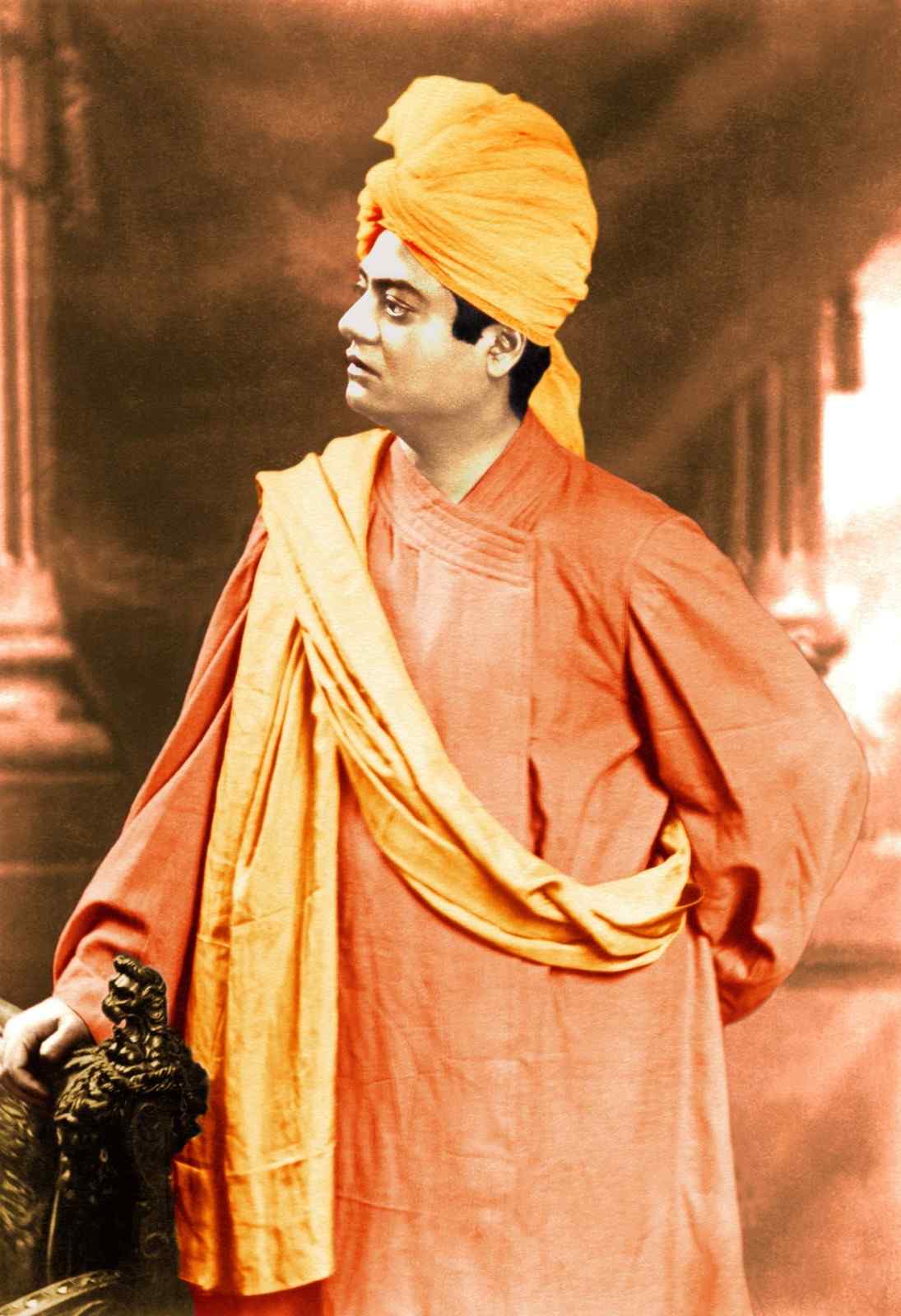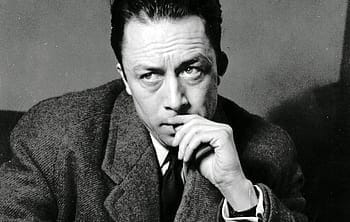Why Swami Vivekananda Embodies the Spirit We Need Today
Most of us know Swami Vivekananda as the monk who spoke in Chicago and made the world turn toward India. But to truly follow him, we must see the man behind the speeches—a man who faced hunger, walked alone for years, cried quietly at night yet smiled in front of others. A man who kept walking, not for himself, but for those who had no voice.
Swamiji did not live an easy life. His journey was full of struggles—both outside and within. And yet, he never gave up. That is what makes him worth following—not just his words, but his courage to live those words.
Let’s talk about a few real reasons why Swami Vivekananda must be our role model. Not based on idealism, but based on truth.

1. He knew poverty and still chose to serve
After his father died, Swamiji’s family was left with nothing. He often went without food. He walked in worn-out shoes. People who once called him a friend avoided him. He knocked on doors for help, but many turned him away.
Even after becoming a monk, his struggle continued. He walked from village to village. Sometimes he slept under trees. Sometimes he ate just once in two days. In many towns, people treated him like a beggar. He wrote about this in his letters. He felt hurt, but never let it shake his purpose.
He once said, “Feel, my children, feel, till the heart stops and the brain reels.” He wanted us to feel the pain of others—because he had felt it deeply himself.
“May I be born again and again, and suffer thousands of miseries so that I may worship the only God that exists, the only God I believe in—the sum total of all souls—and above all, my God the wicked, my God the miserable, my God the poor of all races, of all species…”
— Letter to Sister Nivedita, 1898
2. He faced loneliness and emotional pain
Swamiji was not always strong. He missed his guru, Sri Ramakrishna, terribly after his passing. There were times he felt completely alone. In his letters to Sister Nivedita, he wrote, “No one understands me… I am weary.”
He had health issues—frequent headaches, poor sleep. He sometimes broke down in private. The weight of carrying a movement, with little support, drained him. Even after his huge success in the West, he was not always at peace.
But he never pretended. He remained honest. He showed that even great people feel broken sometimes—and that it’s okay. What matters is standing up again and moving forward.
“I am tired, Nivedita… I want rest, I want peace. Not this battle always. And yet, the moment I rest, my soul burns within me again.”
— Letter to Sister Nivedita, 1899
3. He returned to India when he could have lived in comfort
After the Chicago address, Swamiji was offered many comforts. People in the West treated him with great respect. He could have lived there easily. But he chose to return.
He had seen the poverty in India. He had walked with farmers, sat with the sick, listened to the cries of women and children. He could not forget them. He once said, “It is a sin to preach religion before filling stomachs.”
He founded the Ramakrishna Mission—not just to meditate, but to serve. To run schools, hospitals, and relief work. He built a path for others to walk—a path of selfless action.
He didn’t just speak of India’s glory. He worked to heal its pain.
4. He was fearless in speaking the truth
Swamiji loved India, but he didn’t ignore its problems. He spoke out against caste injustice. He criticized meaningless rituals. He said what many feared to say.
He believed real religion was service. He said, “Worship the living God—the poor, the weak, the helpless.” He didn’t want us to just sit in temples. He wanted us to act.
He also warned that blind belief without reason is dangerous. He believed in strength, not submission. In truth, not show. He never softened his words to please others. He lived with honesty, even if it made him unpopular.
“Condemn none: if you can stretch out a helping hand, do so. If you cannot, fold your hands, bless your brothers, and let them go their own way.”
5. He believed in the youth of India
While others saw the youth as weak or lazy, Swamiji saw fire in them. He once said, “Give me 100 energetic young men and I shall transform India.”
He believed the future of India lay in the hands of its young people. He encouraged them to be strong—not just in body, but in mind and heart. He didn’t want blind followers. He wanted thinking leaders.
He pushed for education that builds character. He believed that young minds, when filled with courage and truth, could change the nation. And he gave his life to inspire that belief.
Even today, when we read his words, it feels like he is speaking directly to us. Calling us. Trusting us.
6. He never craved recognition
Swamiji often felt ignored by those around him. Even in India, after returning from the West, many questioned his efforts. Some mocked him. Some doubted his vision. Yet he never chased validation. He worked quietly, even when no one praised him.
In his letters, he shared how deeply it hurt to be misunderstood. But he believed real work speaks louder than fame. He reminded his followers to keep serving, even if no one notices—because truth doesn’t need a spotlight.
“They alone live who live for others, the rest are more dead than alive.”
7. He united East and West through understanding
Swamiji didn’t go to the West to convert or criticize. He went to build bridges. He shared India’s spiritual strength but also admired Western energy, science, and discipline. He believed India must learn from the West, and the West from India.
He said, “What we want is Western science coupled with Vedanta.” This vision of unity made him different. He respected all cultures and believed in a shared future.
He showed that one can be deeply rooted in their own tradition, while still open to the world.
8. He lived for a cause greater than himself
Everything Swamiji did was for others. His speeches, travels, and teachings were all for the good of people. He wanted to uplift the poor, educate the youth, and awaken the sleeping spirit of India.
He lived with urgency because he knew time was short. Even when his health was failing, he kept pushing forward. He said, “This life is short. The vanities of the world are transient. But they alone live who live for others.”
His whole life became a message—a call to rise, serve, and live with purpose.
9. He stood by women’s empowerment
Swamiji believed deeply in the dignity and power of women. He said a nation cannot rise unless its women rise. He wanted women to be educated, fearless, and free. He encouraged Sister Nivedita and supported her mission fully.
He wrote, “There is no hope for the future of the country unless the condition of women is improved. It is not possible for a bird to fly on only one wing.”
“Educate your women first and leave them to themselves; then they will tell you what reforms are necessary for them.”
10. He believed in inner strength, not outer show
Swamiji taught that real strength comes from within—not from wealth, not from power. He used to say, “Be strong, my young friends, that is my advice to you.”
He didn’t care about hollow rituals or empty pride. He wanted every Indian to feel a fire inside—a belief that we are not weak, we are not lost. He gave back confidence to a nation that had been broken.
His message was simple: Know yourself, trust yourself, and rise.
11. He remained rooted in love
Through all his struggles, what kept him going was love. Love for his guru. Love for India. Love for truth. And most of all, love for people—especially those who had nothing.
He didn’t believe in cold intellectualism. His mind was sharp, but his heart was warmer. In one letter, he said, “Love is the only law.” That love became his guide.
Why should we make him our model?
Because he didn’t live for applause—he lived for a purpose.
Because he didn’t hide his tears—he turned them into strength.
Because he didn’t choose the easy road—he walked the hard one, for others.
Swami Vivekananda was not a saint locked in a temple. He was a warrior of the soul. A servant of humanity. A voice of truth.
He fought his way through rejection, illness, and heartbreak—and still stood tall. For India. For the world. For every person who dreams of a better life.
He didn’t just ask us to rise. He showed us how.
That is why we must make him our model. Not to copy his clothes or quotes, but to live his courage, his clarity, and his deep love for humanity.
Let us remember him not just in words, but in how we live, serve, and stand up—especially when it’s hard.
That is how we truly follow Swami Vivekananda.



Appreciating the dedication you put into your website and in depth information you offer. It’s great to come across a blog every once in a while that isn’t the same out of date rehashed information. Wonderful read! I’ve bookmarked your site and I’m including your RSS feeds to my Google account.
Some genuinely nice and utilitarian info on this website, too I conceive the pattern contains excellent features.
Hello.This post was really fascinating, particularly since I was looking for thoughts on this matter last Friday.